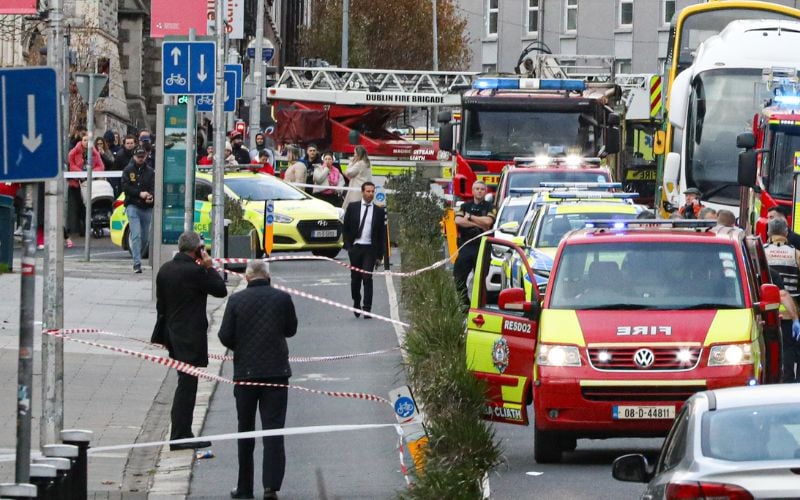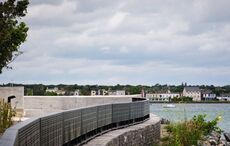A Co Down community group is calling for the construction of local wind turbines to be halted as aerial footage shows the potential for a remarkable archaeological find.
The Friends of Knock Iveagh community group in Co Down is calling for an immediate stop to local construction work as aerial photos taken of the land nearby show “miracle markings” that could outline a potential Neolithic site buried beneath.
The long stretch of warm, dry weather in Ireland over the past two months has already resulted in remarkable historical finds in Co Meath with hopes that the recently revealed images from the Knock Iveagh Neolithic site in Banbridge could also confirm a previously undiscovered and unrecorded site.
The images show very distinctive markings across the dried ground and activists from Friends of Knock Iveagh, who have been campaigning to protect the area since construction began last September, believe they show major archaeological discoveries hidden just beneath the surface.
Read more: Major new ancient discovery as important as Stonehenge made thanks to Irish heatwave

Image credits : PAK Aerial Media/ Friends of Knock Iveagh
“We are absolutely thrilled with all the new discoveries, as well as the additional detail that it is possible to see on previously recorded sites,” said a spokesperson from the group.
“This area has been - as we have said all along - an important place for millennia, and it is an incredibly significant Royal ritual landscape. Now it is as though a light has been shone into the past, and it has come to life before our eyes.
“We believe that the authorities have manifestly failed in their duty to protect this place, despite warnings, and we are now asking the European Commission to investigate.

Image credits : PAK Aerial Media/ Friends of Knock Iveagh
“We call again on ABC Council, the Department for Communities, and the Department for Infrastructure to ensure that developments on Knock Iveagh are discontinued and that an urgent LIDAR survey of the area is undertaken. We also call for Knock Iveagh to be restored to its former glory with access facilitated for the public so that everyone can enjoy this unique and precious heritage.”
“The recent drought has been a rare opportunity to capture glimpses of our past and aerial images only confirm the immense scale and archaeological potential of the entire Knock Iveagh landscape,” added Banbridge native and Trinity College Dublin research fellow Dr. Gavin Hughes.
“The emergence of so many potentially unrecorded or lost archaeological features is extremely exciting news. Given similar new discoveries from the UK and Ireland, it also ably shows us that areas supposedly considered not to be of any archaeological interest can actually be very valuable - but vulnerable - resources. We now have a fleeting chance to properly study, record and sympathetically protect such sites for future generations.”
Read more: How a journalist discovered the “once in a generation” henge near Newgrange

Image credits : PAK Aerial Media/ Friends of Knock Iveagh
The latest discovery is located close to the 5,000-year-old Knock Iveagh burial cairn, famed for its panoramic views. The construction of wind turbines closeby has caused controversy since planning permission was granted five years ago.
Local Sinn Féin MP (Member of Parliament) Chris Hazzard has said construction on the site should now be halted until a further archaeological investigation can be carried out.
In response, a spokesperson for the Northern Ireland Department for Communities told the Belfast Telegraph: "The Department has been forwarded a number of images depicting crop marks and potential new archaeological sites around Knock Iveagh. Some images enhance our understanding of already recorded sites in the area, including a large enclosure to the north-west of the hill.

Image credits : PAK Aerial Media/ Friends of Knock Iveagh
"As a result of the particularly dry weather, this has been revealed to contain a previously unrecognized central circular feature.
"We will be carrying out further work in the coming weeks to assess the crop marks and, where we can establish that there are new archaeological sites, we will add these as new entries to the Northern Ireland Sites and Monuments Record. Entries in the Record are a material consideration under planning policy.”




Comments